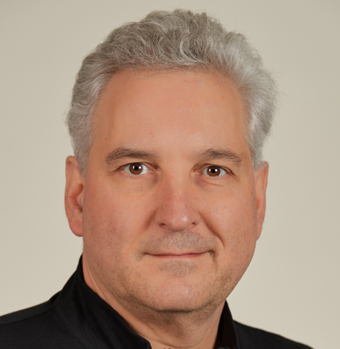Empowering Scientists: The Revvity Signals Approach
A Revealing Q&A with David Gosalvez, Chief Strategy Officer-Signals at Revvity Signals Software
In the fast-paced world of scientific research, adaptability and innovation are essential. Revvity Signals has set itself apart by pioneering a true Software as a Service (SaaS) application tailored for research scientists.
With a strong focus on user experience and intuitive design, Revvity Signals enables scientists to quickly maximize the potential of their solutions. By attentively listening to the scientific community, prioritizing innovation, and leveraging AI, they are well-positioned to lead the creation of more agile, efficient, and impactful scientific software solutions.
Last year, we had the opportunity to speak with David Gosalvez, about the company's strategies and opportunities. Recently, we caught up with David again to hear his vision for the future of Revvity Signals.
Q: How does Revvity Signals remain a leader in adapting to constantly evolving customer needs, and what makes your solutions unique in the scientific community?
A: We were first-to-market with a true software as a service application (SaaS) for research scientists. That is our secret sauce.
In the past, scientists often felt frustrated by the long wait times for new software features. While the industry standard used to be annual or biennial product releases, we’ve pushed the boundaries to deliver software updates up to ten times a year. Today, with our focus on rapid delivery of new capabilities, scientists are more engaged and actively take part in shaping the future of our products. They trust we’ll quickly implement their feedback, resulting in more efficient and impactful research.
In addition, we prioritize user experience and intuitive design. Our software is easy to learn and use, minimizing the need for extensive training. Scientists can quickly become proficient and start leveraging the full capabilities of our solutions. This rapid pace of delivery and implementation empowers scientists to adopt new capabilities quickly and accelerate their research.
By listening closely to the research scientists we serve, and prioritizing their needs, we are enabling scientists to be more agile and efficient in the lab.
Q: What is your vision for the future, and what can research scientists look forward to?
A: Our vision is to support scientists across the entire pharma lifecycle and support their end-to-end workflows. While we’re widely recognized for our chemistry leadership and our flagship product, ChemDraw, the reality is that we already serve a much wider range of scientific disciplines. Broadly speaking, in the Signals platform biologists outnumber chemists by almost 2-to-1.
Looking to the immediate future, one of our key goals is to help scientists cope with the daunting complexity of synthetic biology. The proliferation of new therapeutic modalities requiring ever more intricate synthetic processes requires a whole new set of design, collaboration and lab execution software tools. So far Signals has focused on knowledge capture. Our current systems enable scientists to capture, understand and make timely scientific decisions, regardless of the complexity and diversity of experiments they run. But knowledge capture is no longer enough.
The development and production of biologics requires collaboration across multiple teams in different locations with high levels of coordination, planning, and tracking. What these new modalities need is software that goes beyond the traditional remit of electronic notebooks. We have been working closely with synthetic biologists and rapidly building bio-design, workflow tracking and execution, and sample management tools to address the challenges of next generation therapy bioprocessing.
Q: How does Revvity Signals plan to integrate artificial intelligence (AI) and machine learning (ML) into its solutions?
A: This is the one question I answer the most often these days. We’re leveraging AI and machine learning to enhance our products in two ways.
First, we are using large language models and generative AI to improve the user experience with features like enhanced search, writing and summarization assistants, and automated configuration tools. This is something all software companies, regardless of industry are doing because it is going to have a profound impact on productivity and user satisfaction.
Second, we are focusing on making advanced scientific AI models more accessible to a wider range of scientists. Many pharma/biotech companies employ skilled computational chemists and bioinformaticians who leverage sophisticated scientific AI and machine learning tools. However, the average bench scientist often lacks expertise and access to such advanced tools. We aim to bridge this gap by simplifying access to these technologies.
Through our visual analytics tools scientists can trigger the execution and view the results of sophisticated AI/ML computation with a single click, with no need to understand the underlying complexities. This democratization of AI will empower a broader range of scientists to harness the full potential of domain specific algorithms.
Q: Can you share any memorable customer success stories?
Shortly after the pandemic, I had the chance to visit one of our global pharma customers. I was there to meet with their R&D IT leadership, but as luck would have it, my trip coincided with a big milestone—their first large group of scientists had just gone live with Signals Notebook. I didn’t know it, but they were throwing a celebratory coffee hour, and they invited me to join. When I walked in, I couldn’t believe it—they had a huge sheet cake with the Signals logo on it! It was such a surreal and rewarding moment.
What really stuck with me was the vibe in the room. The scientists were genuinely excited—they were coming up to me saying things like, “It’s beautiful!” and “It just works!” It felt amazing to hear that kind of feedback firsthand. You have to understand, in the old days of on-premises deployed software, when I visited customer sites, there was often a bit of a different tone—listening to complaints, apologizing for delays, or troubleshooting software issues. But this? This was a whole new experience. That’s the magic of SaaS. That’s the Signals difference.

David Gosalvez, Ph.D.
Chief Strategy Officer-SignalsWith 25 years of experience in scientific software and analytics, David Gosalvez brings a rare combination of technical and domain expertise with broad knowledge across scientific use cases. He is a passionate advocate for improving the efficiency and quality of science via innovative software solutions. As head of Product Strategy, David works with scientists and IT across pharma and chemical industry to set the direction of the Revvity Signals Informatics portfolio. He also works with other scientific software vendors to integrate complimentary capabilities and AI/ML models into our solutions. As Director of Cheminformatics, he was responsible for the sustained growth of ChemDraw and Spotfire Lead Discovery. Previously, David headed the interdisciplinary Science & Technology team chartered with creating the novel data management technologies that underpinned Revvity Signals platform. David also served as Executive Director of Application Development at CambridgeSoft where he brought to market the Oracle Chemistry Cartridge and ChemBioOffice Enterprise Suite.
